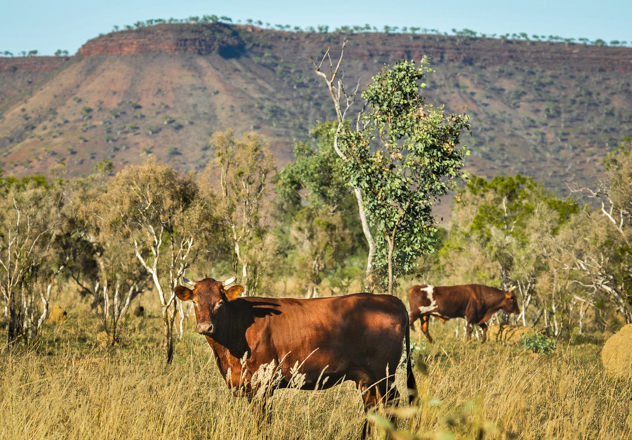Tableland Partnership Area protects over 300,000 hectares of the remote central Kimberley, and provides a new model for integrating conservation and community development on indigenous land.
Tableland is managed by AWC in partnership with the Yulmbu Community. The property is subleased by AWC and managed collaboratively by AWC and the community to enhance its conservation through improved management of fire, feral herbivores and weeds. The community receives income (sublease payments), employment, and assistance with managing a sustainable cattle herd. “Old people been telling me to look after country, look after family. Been looking, waiting, for long time - got no jobs, no way to pay up bills, can’t look after country. Now, get him done.” - Wallace Midmee, on the AWC-Yulmbu partnership at Tableland


Tableland became an AWC sanctuary in 2012, and covers 307,000 hectares of the remote central Kimberley. Adjacent to Mornington-Marion Downs, the three properties combined represent a contiguous protected area of more than 870,000 hectares (over 2.1 million acres).
The landscapes on the sanctuary are dramatic, with spectacular ranges, major rivers, deep sandstone gorges and steep-sided mesas. The Durack Ranges form the spine of the property – raised folds of ancient marine sandstone interleaved with narrow valleys of alluvial and basaltic soils. The Chamberlain Valley is the largest of these, running over 120km from the centre of the property to the north eastern boundary. Spectacular gorges such as Crocodile and Teronis Gorge cut through the sandstone between the valleys.
Tableland Wildlife Sanctuary encompasses the headwaters of three major Kimberley rivers, and importantly protects the upper catchment of the Fitzroy River – the largest unregulated river in Western Australia. These waterways pulse in seasonal cycles, from massive flooding events in the wet season (December to April), to chains of contracted pools during the dry season.
The habitats on Tableland are varied – from extensive blacksoil plains that form gilgais (the Spirit Tracks) with the expansion and contraction of the clay, to thick spinifex on the ranges dotted with eucalypts and Livistona palms. Narrow ribbons of riparian vegetation fringe the waterways – tall river red gums, Pandanus and Freshwater Mangroves – and small patches of fire-sensitive vegetation crowd in the gorges. The savannah woodlands in the valleys and plains are often peppered with iconic Boabs. These habitats support over 700 species of flora, including many endemic plants.
Tableland is a stronghold for many species that are in decline elsewhere in northern Australia, as well as Kimberley endemics like the Ningbing Pseudantechinus. Tiny and ferocious Common and Long-tailed Planigales hunt for their prey in the cracks of the blacksoil plains. The bird fauna is especially diverse, including several finch species, a large number of raptors, riparian specialists (Purple-crowned Fairy-wrens and Buff-sided Robins) and large populations of the ground-dwelling Australian Bustard and Bush Stone-curlew.
The science and land management program at AWC’s Kimberley sanctuaries is a model for conservation in northern Australia:
AWC protects three populations of Northern Quoll and their habitat on a number of our northern sanctuaries.
AWC protects one of the largest remaining populations of the Gouldian Finch at Mornington-Marion Downs.
 © Wayne Lawler/AWC
© Wayne Lawler/AWC
Preserving the wildlife of the Kimberley is about protecting and restoring habitat. On Tableland, AWC is working towards this by reducing the density of cattle on the property and restricting their range, actively managing fire to maintain patches of unburnt habitat (which also helps to reduce the impact of feral cats), and controlling weeds.
Help us protect Australia’s threatened wildlife
Donate Now